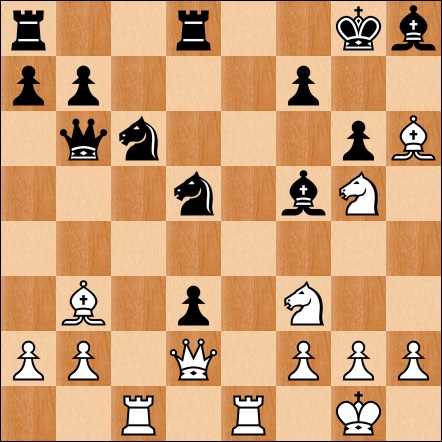On August 22nd I visited the ICCF Congress in Llandudno to give a simultaneous display. It went quite well despite my lack of tournament practice with 15 wins and 3 draws against a field which included two ICCF Grandmasters, two Senior International Masters and some young Welsh stars. I confess that I have been playing a lot of blitz (5 minutes with a 3 second increment) against my son Sam and it does seem to have sharpened us both up. There were several moments where I found some strong tactical sequences, such as this one:

Here I sacrificed a knight with 23.Nxf7! Kxf7 24.Ng5+, seeing that after 24...Kg8 I had 25.Re8+! and that after 24...Kf6 I had at least a draw with 25.Nh7+. When my opponent did play 24...Kf6 I found 25.Qf4! threatening 26.Re6 mate, and when my opponent failed to find a defence he graciously asked me whether I would prefer him to take the queen or allow the mate. I plumped for the latter and the game ended with 25...Nxf4 26.Nh7#.
The opening is worth noting as I think that the quiet Italian Game (the game started with 1.e4 e5 2.Nf3 Nc6 3.Bc4 Nf6 4.d3) is an excellent option for those who open with 1.e4 but prefer to learn strategy rather than opening analysis. For members interested in the complete game I have included it in the August 2018 members clinic. If you are not a member but would like to join you can do so here.
It was also interesting to play over the board games against very strong correspondence players, not least because I have suffered against them when playing them at their own time limit. For many years I have used secret correspondence games to test openings, a practice I believe other over-the-board GMs use as well. My impression was that they have a good understanding of chess and better openings than players of a similar strength who just play over-the-board. At the same time they might benefit from faster time controls where fast reactions and tactical awareness are at a premium.
Nigel Davies
